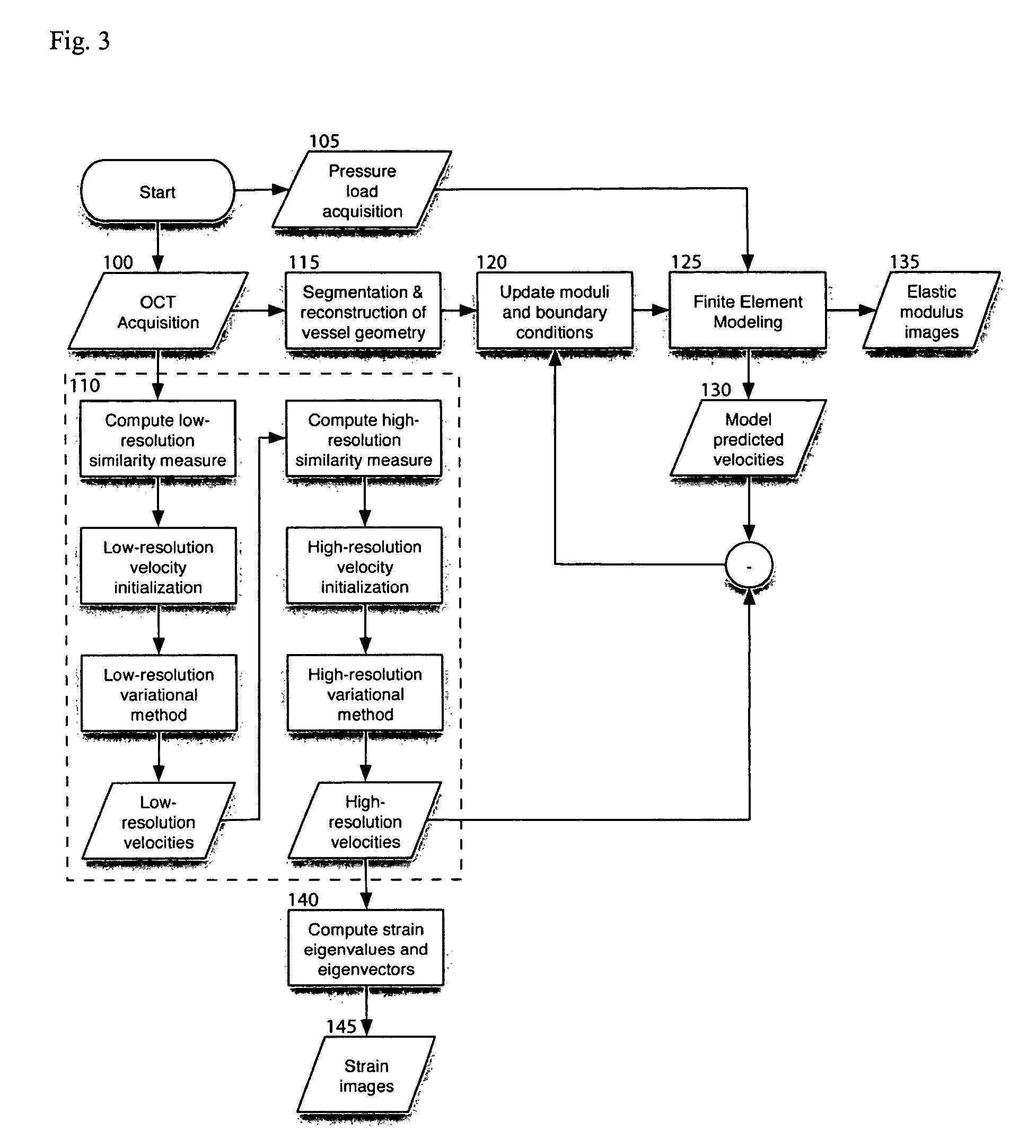Process, system and software arrangement for measuring a mechanical strain and elastic properties of a sample
a technology of elastic properties and mechanical strain, applied in the field of measuring mechanical strain and elastic properties of samples, can solve the problems of high-risk scenario, insufficient knowledge of structural and compositional features alone, and inability to accurately predict plaque rupture, etc., to achieve the reduction of parameter search space, the effect of preserving sharp spatial gradients in strain or modulus, and minimizing partial volum of tissue types within each elemen
- Summary
- Abstract
- Description
- Claims
- Application Information
AI Technical Summary
Benefits of technology
Problems solved by technology
Method used
Image
Examples
example
[0113]The following description provides details on the experimental testing of an exemplary embodiment of the method according to the present invention: In particular, the exemplary multi-resolution variational method was performed in simulated OCT imaging during axial compression of a tissue block containing a circular inclusion. FIG. 6 depicts a finite element model geometry 300 and corresponding finite element mesh 305 used for the tissue block and circular inclusion. Sequential interference images were generated as described in equations (1)-(6) by computing the product of an exponential decay term and a convolution between the coherent OCT point-spread function and the distribution of backscattering arising from point scatterers moving in the sample.
[0114]Backscattering values at discrete points within the tissue block were simulated as independent uniform random variables with a variance of 10 for scatterers within the block and a variance of 2 for scatterers within the circu...
PUM
 Login to View More
Login to View More Abstract
Description
Claims
Application Information
 Login to View More
Login to View More - R&D
- Intellectual Property
- Life Sciences
- Materials
- Tech Scout
- Unparalleled Data Quality
- Higher Quality Content
- 60% Fewer Hallucinations
Browse by: Latest US Patents, China's latest patents, Technical Efficacy Thesaurus, Application Domain, Technology Topic, Popular Technical Reports.
© 2025 PatSnap. All rights reserved.Legal|Privacy policy|Modern Slavery Act Transparency Statement|Sitemap|About US| Contact US: help@patsnap.com



